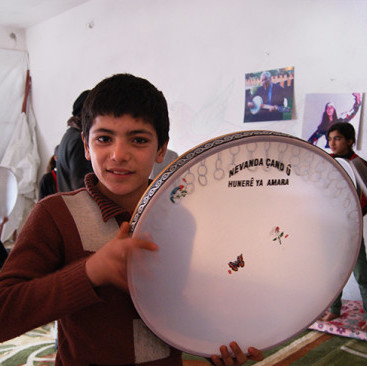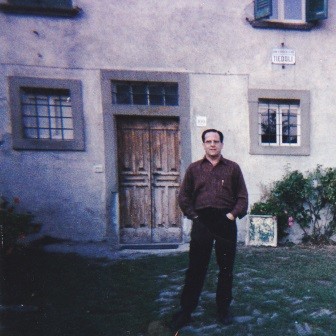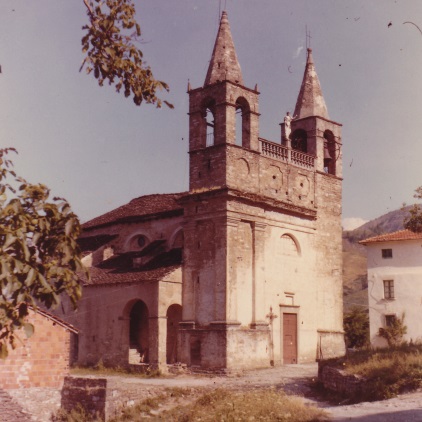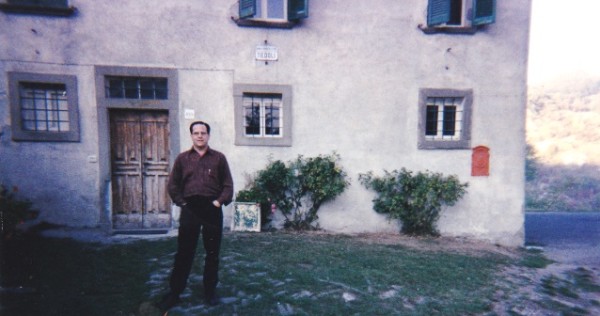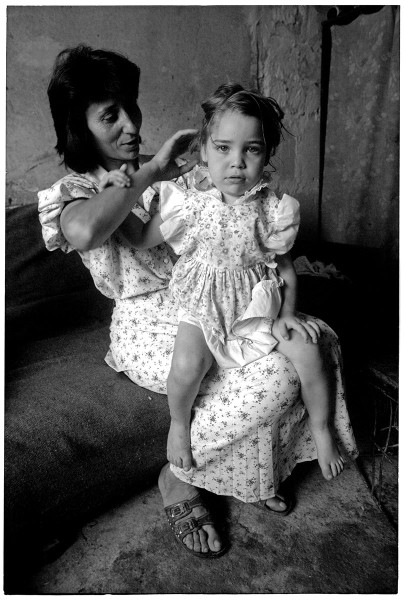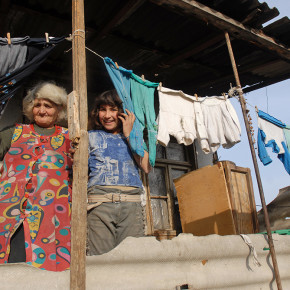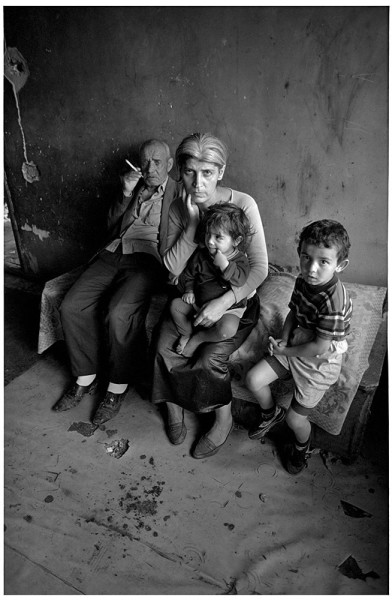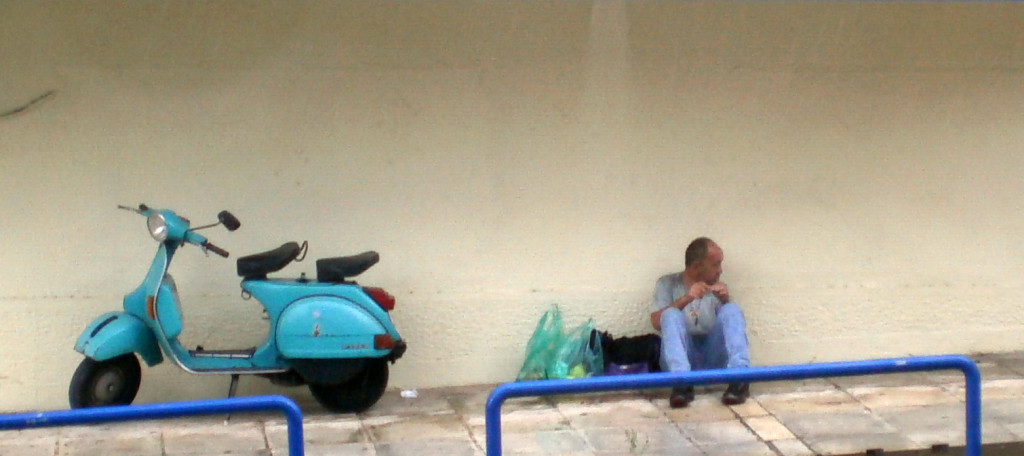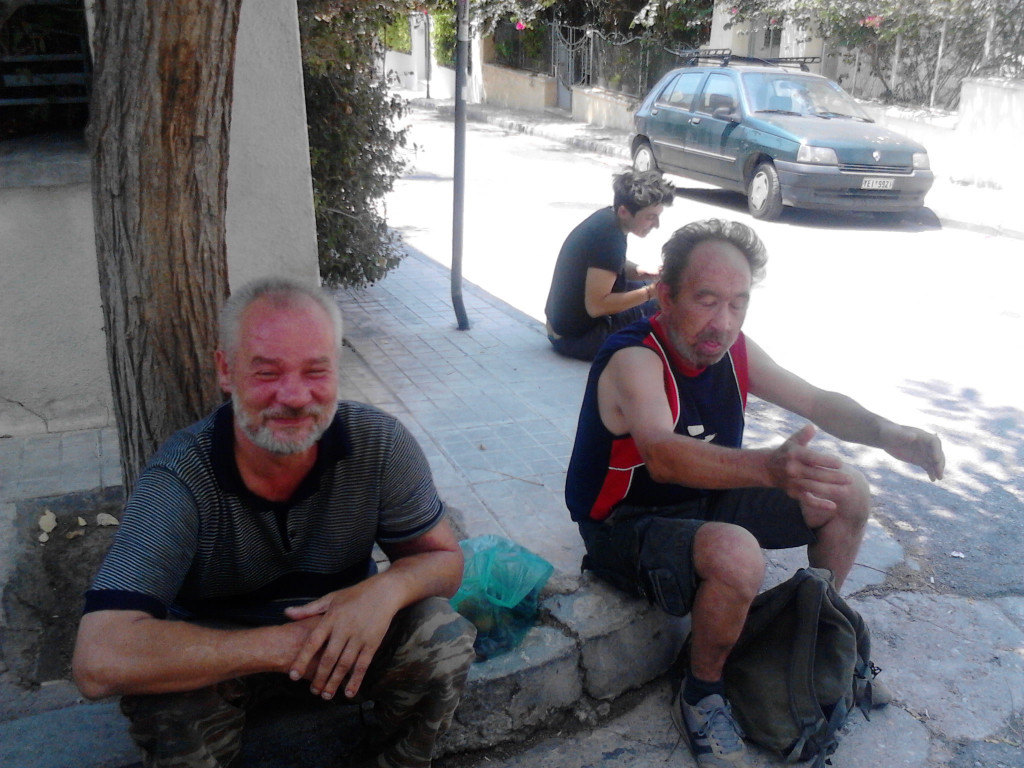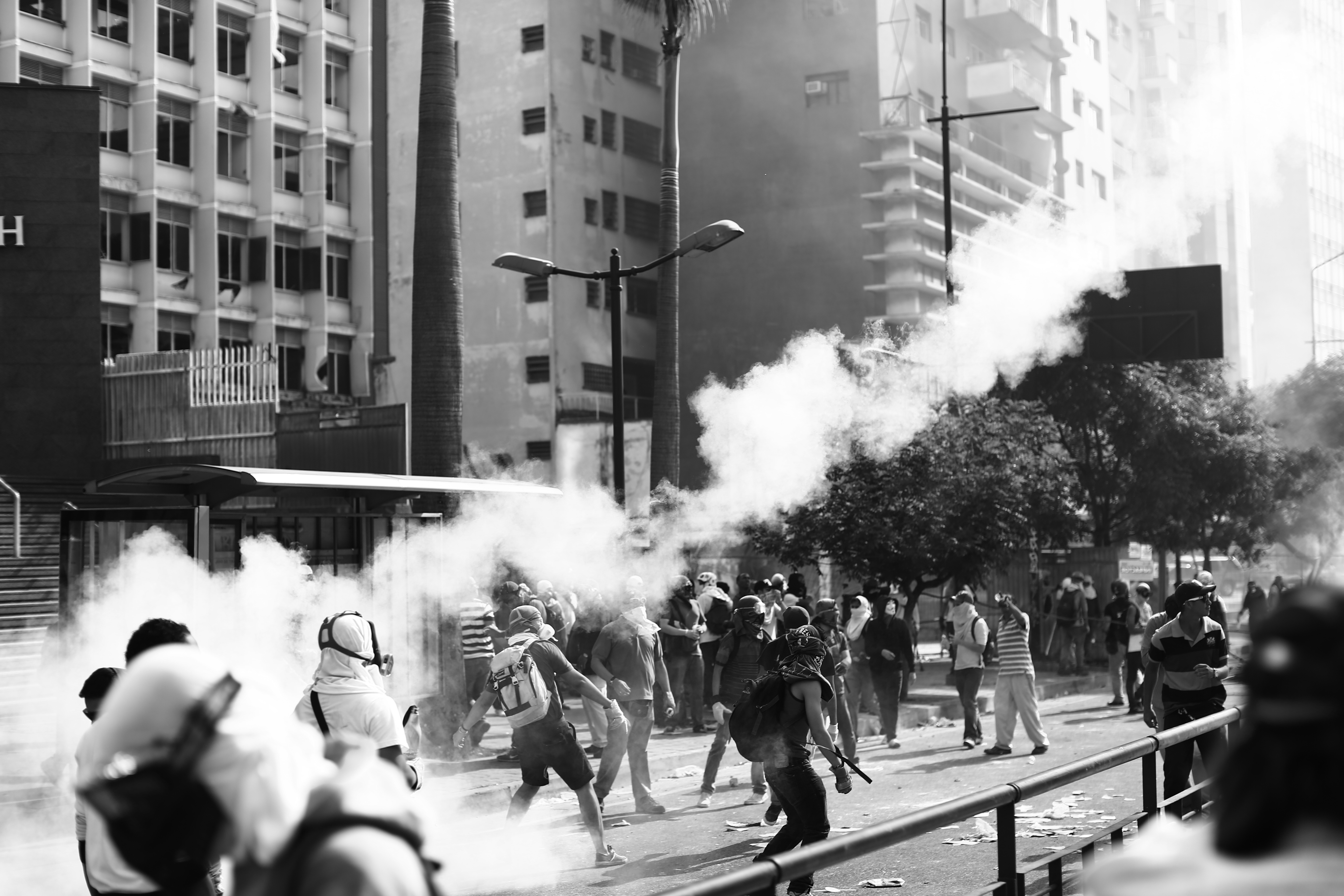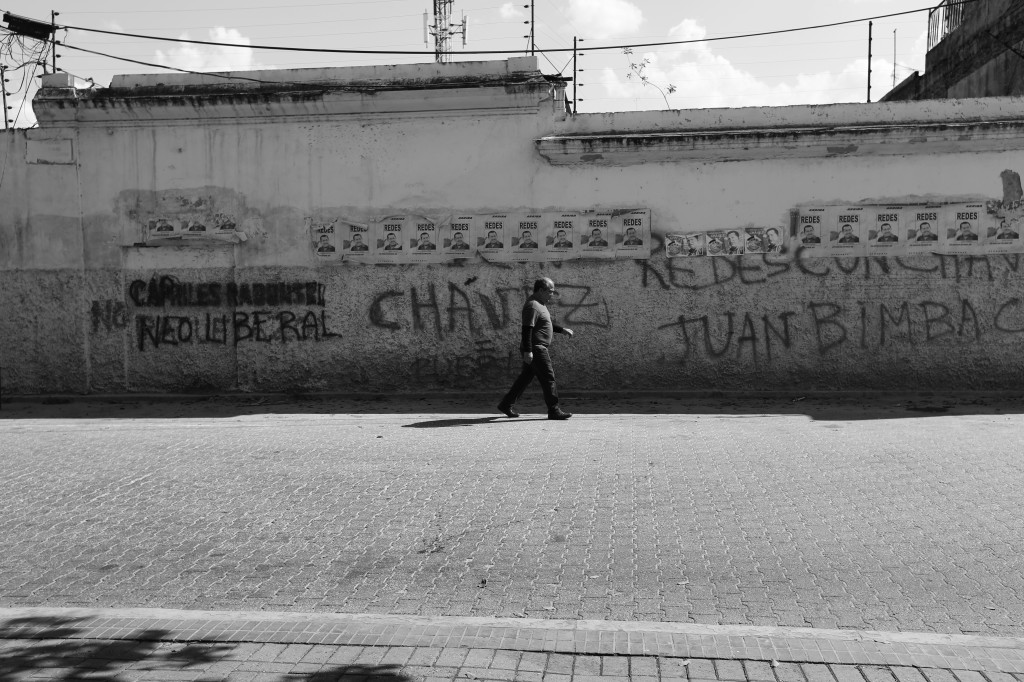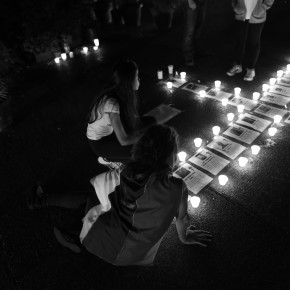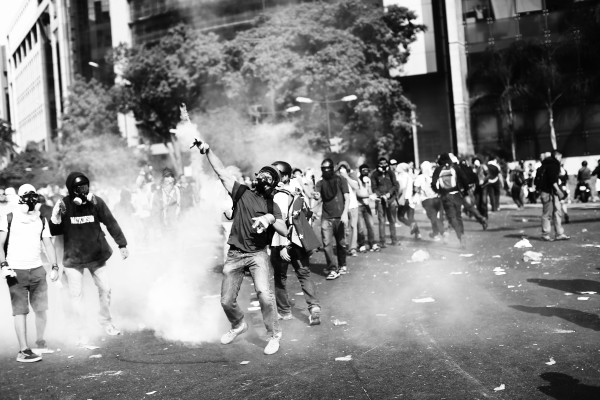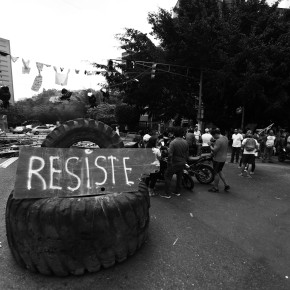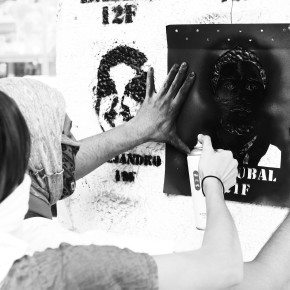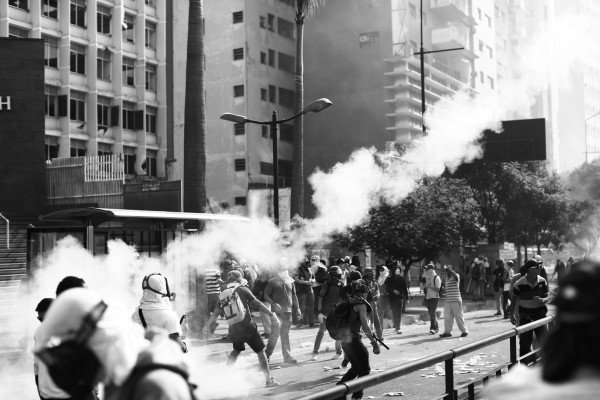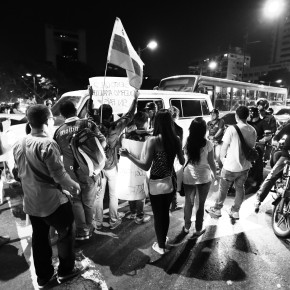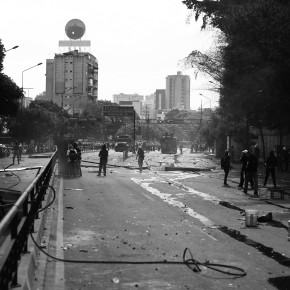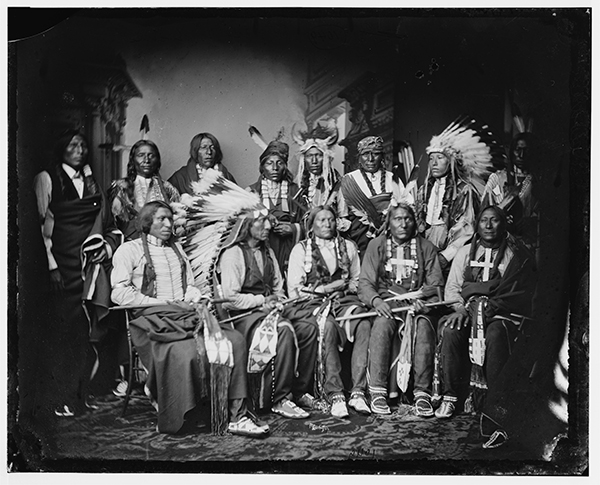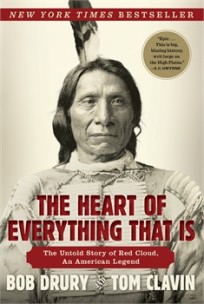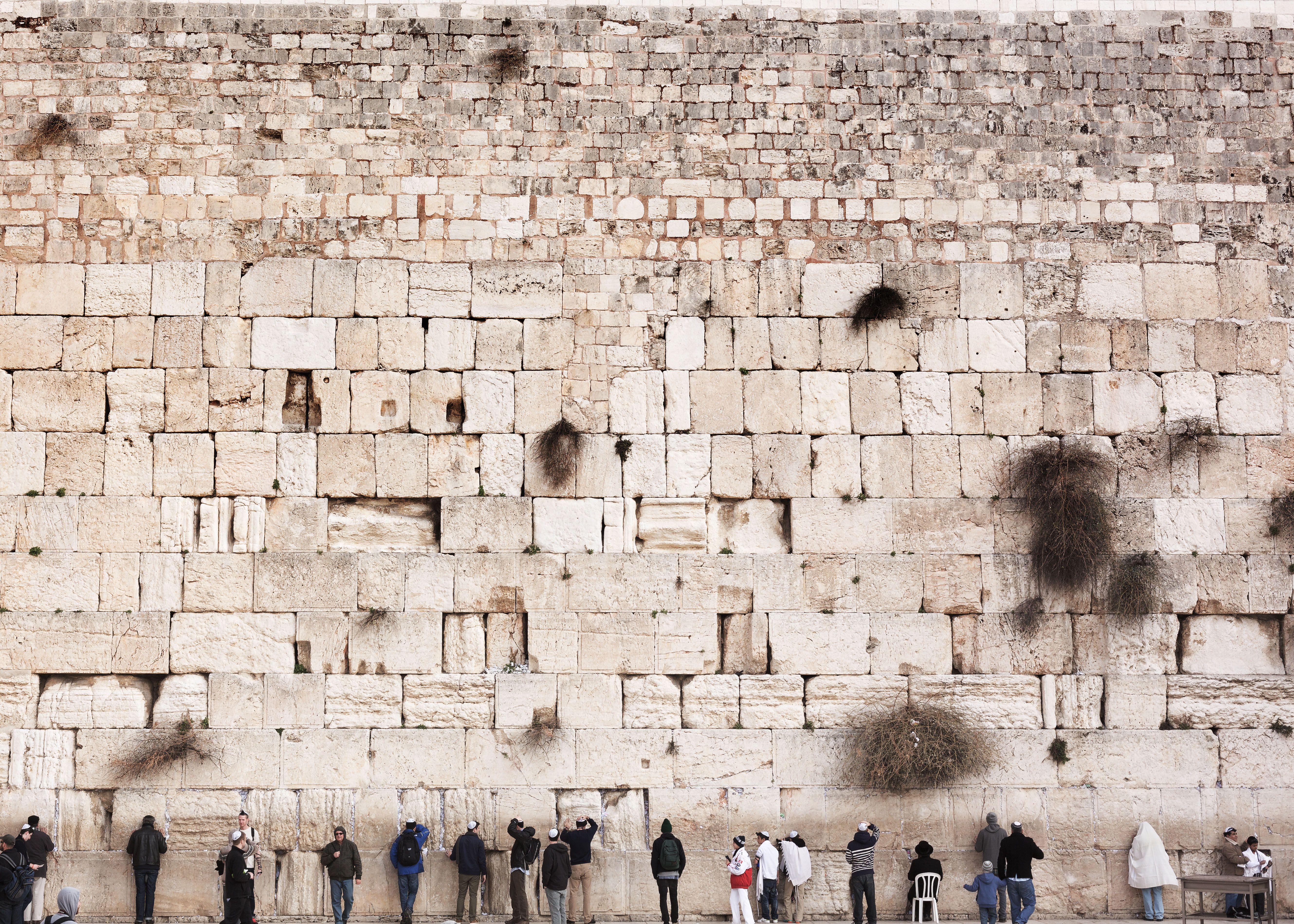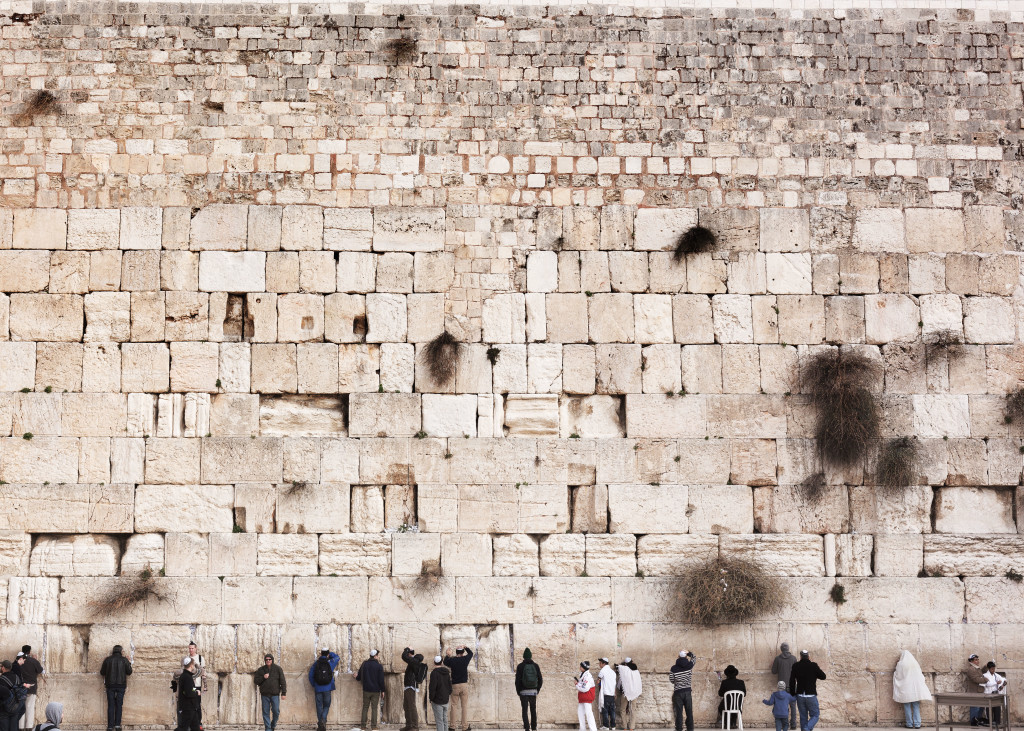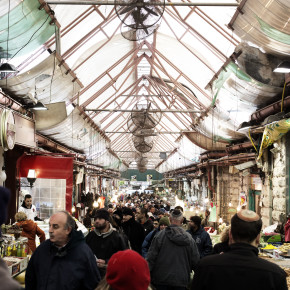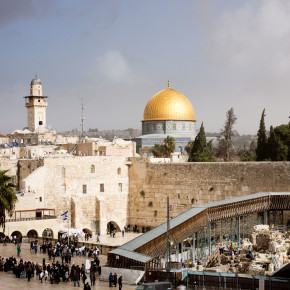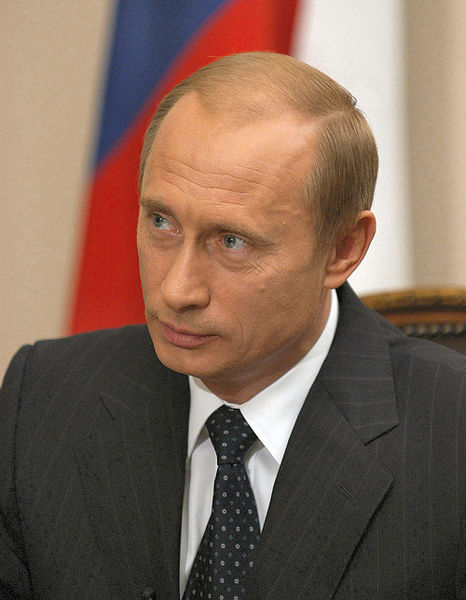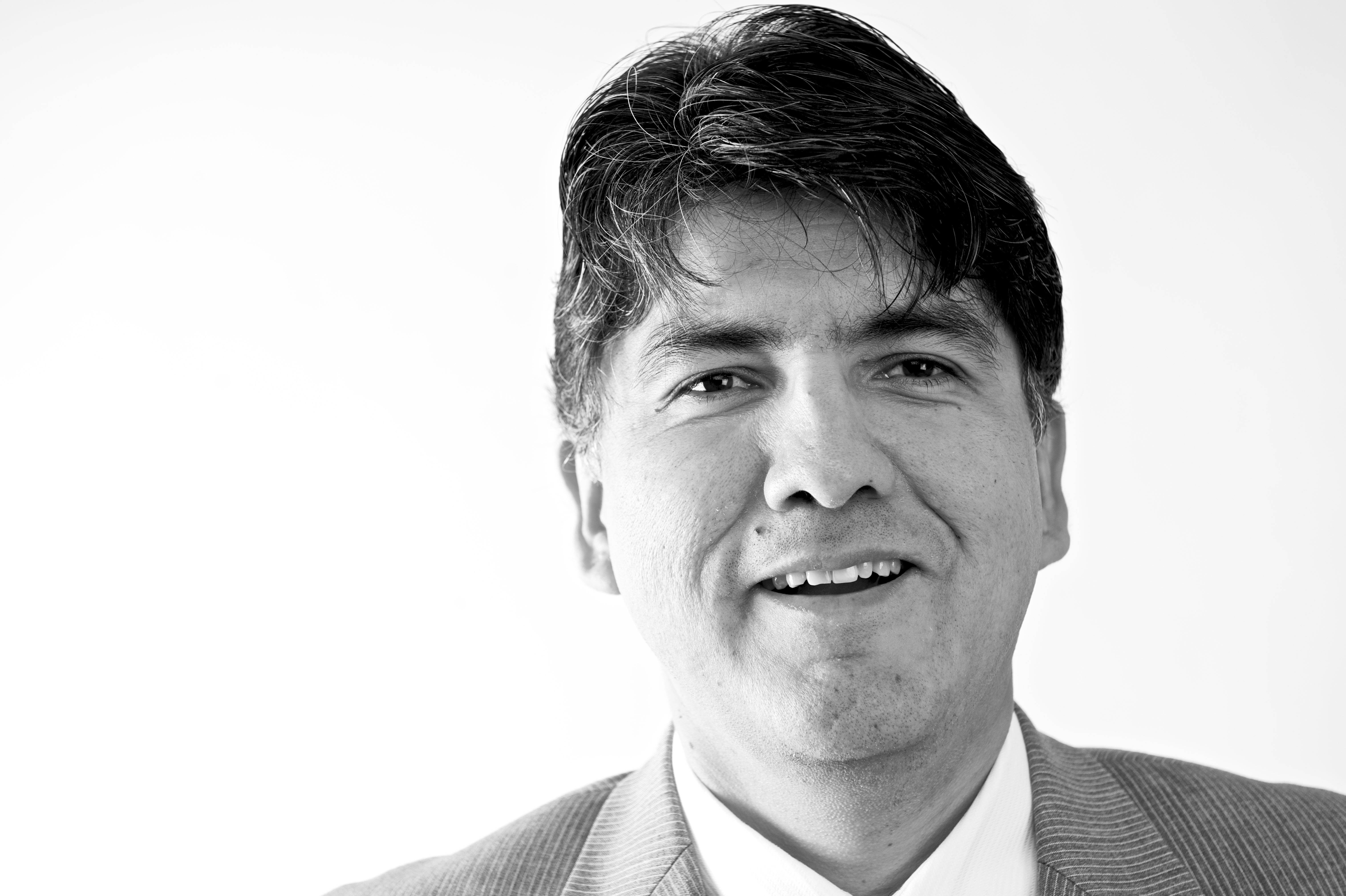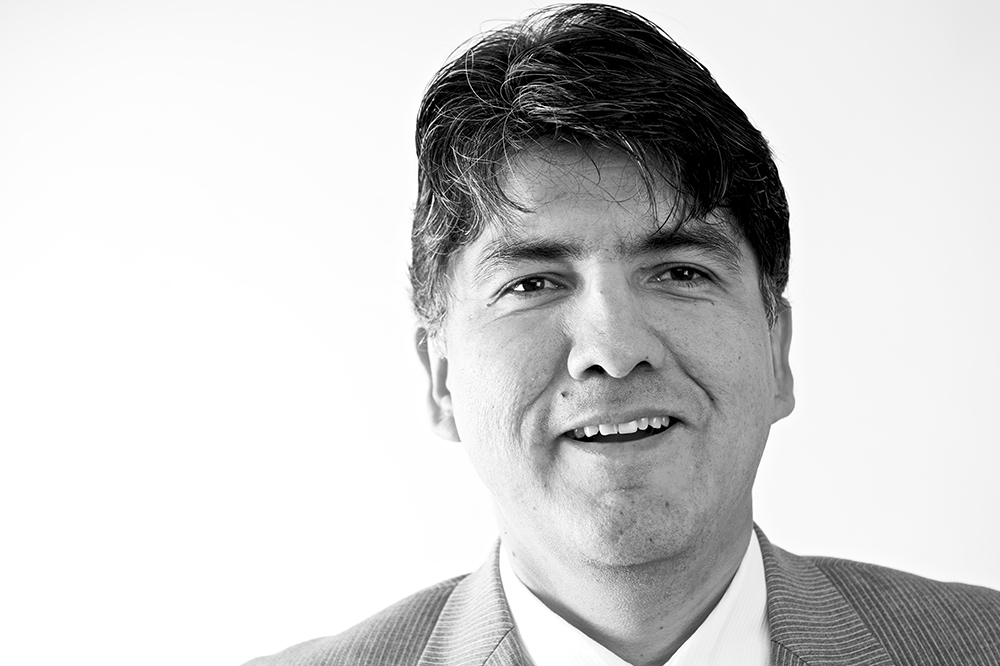
We stand on an empty highway in South Turkey, twenty kilometers from the Syrian border. The dusty road leads to the city of Suruç. My husband and I are hitchhiking into a war zone, or at least the fringes of one. My heart thumps in my chest.
A yellow truck appears like a mirage in the distance. I stick out my thumb and the driver stops abruptly, kicking up a cloud of grey dust.
“Suruç?” he asks.
“Evet—yes,” I agree.
“Yardım?—to help?”
“Evet.”
The driver hands me his business card. He is none other than Suruç’s mayor, driving aid and supplies into the city himself. This is the first of many clues: everyone here is involved in the war effort.
It’s December 26, Boxing Day. Activists and volunteers have descended on Suruç to support Kurdish forces across the border in their fight against the Islamic State, a Sunni extremist group also known as ISIS. In the parts of Syria and Iraq that it now controls, ISIS has persecuted and displaced minorities. The victims of its highly publicized atrocities—rapes, forced marriages, beheadings, crucifixions—have included the Yezidis, a Kurdish religious group.
Through the truck window, a compound with rows of identical green-grey semicircle tents comes into view. “Çadır kent—tent city,” the Mayor tells me, pointing. We pass a second camp shortly afterward. A sign announces our arrival: “Suruç: Population 101,000.”
The population is now more than twice what it says on the sign. An estimated 150,000 people—mostly Kurds—have fled to Suruç from Kobani, another Kurdish city that is inside Syria. ISIS has taken over part of Kobani, trapping those civilians who remain between its militants and the closed Turkish border.
The Mayor asks where we want to go. I have scribbled instructions from a friend of a friend I met in Diyarbakir. It says we should report to Suruç’s city hall.
In the aftermath of World War I, the French and British divvied up a large swath of the collapsed Ottoman Empire, splitting up the Kurdish people across the region’s redrawn national boundaries. Since then, the Kurds have found themselves unwelcome throughout the Middle East, the targets of massacres, chemical attacks, and state-perpetrated “disappearances,” along with political repression and discrimination.
The ongoing rebellion against the regime of Syrian president Bashar al-Assad, however, has loosened the hold that Damascus had on the country’s Kurdish minority. In 2012, the Kurdish inhabitants of northern Syria took advantage of Assad’s retreating forces, declaring their region autonomous and naming it Rojava—Kurdish for “western.” (Rojava is the western part of what many Kurds consider to be Kurdistan, a culturally defined region that also includes large parts of southeastern Turkey, western Iran, and northern Iraq.)
The war has also brought the Kurds unprecedented news coverage. After the Islamic State began its siege of Kobani, the media called attention to not only the waves of Kurdish refugees but also the strength of Kurdish fighters—especially the women fighters—and the progressive stances that Kurdish political parties have taken on issues such as feminism and minority rights.
A few of the more astute commentators also mentioned the innovative system of governance—democratic self-management—being tested in Rojava. Equal rights are enshrined in the Rojava system. There are three official languages. Every canton is administered by three leaders—in theory, a Kurd, an Arab, and a Christian—with at least one of the three a woman. In practice, of course, most of these ideas have not filtered all the way down. Many Kurds still fight for a country of their own. But many others just want to coexist peacefully with other Syrians.
It strikes me how very normal Suruç looks, despite the war being only ten kilometers away. Shops, restaurants, and teahouses are open. People bustle about the streets. Men wearing red and white kaffiyeh on their heads loiter around the main square, chatting, smoking, and haggling with the merchants.
We saunter into the city hall shouldering our huge backpacks, tired and smelly after days spent hitchhiking around the frozen edges of Anatolia. The few men who stroll past us in the narrow corridors greet us formally despite our disheveled appearance.
I explain to one of them that we have come to help. Some of our friends have been here before, and they advised us to come to the city hall when we arrived, I say.
A man with a characteristically Turkish mustache points to some benches in the hallway. We sit. Soon tea arrives. Another man ushers us into a small office, where I repeat the same halting explanation to yet another man behind a desk. He nods politely, thanks us for coming, and directs us to the city’s cultural center, now a base of operations for the constant stream of activists and volunteers coming through the town. There, a girl who speaks good English points us to the distribution center down the road. She says they need help there now.
The distribution center is a converted wedding salon, filled with stacks of aid packages from around the globe. Groups of volunteers scoop the contents of big sacks into small clear bags, which are then flung onto growing mountains of red lentils, rice, sugar, and chickpeas.
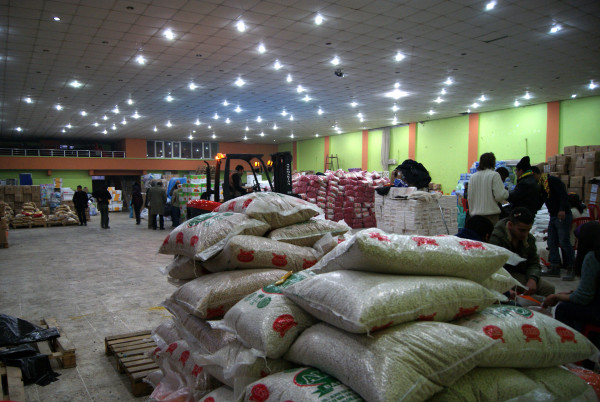
We are warmly greeted by people who speak to us in Turkish, English, and German. Someone hands me a melting plastic cup of tea. “Parti mi?” a girl asks in Turkish. She wants to know if I’m here with a “party,” meaning any of the Kurdish political parties. “No,” I tell her, “just with my husband. You?”
“Evet, parti,” she nods, smiling. She demonstrates how one of us should hold the bags open while the other shovels lentils from the big sack into the smaller one—“not too much, like this, see?”—and then ties it and tosses it onto the stack.
This food, I am told, will go to refugees from Kobane who are living in residential buildings around the city.
The activity here is both methodical and chaotic. Nothing seems to run on a timetable, and people work when they feel like it. Nobody is visibly keeping track of who’s doing what or when. But somehow, everything just gets done.
Every ten minutes, someone asks if I want tea. One man in particular seems very concerned that I drink enough of it. He brings a steaming thermos and small stack of plastic cups around regularly.
Around 7 p.m. a bell rings. We follow the people wandering outside to a van that has just arrived. Two men in the back scoop lentil stew from an enormous metal pot onto flimsy plastic plates.
That night we drive out to Mahser, the last village before the Syrian border—and the raging war beyond it.
A sign says “Çaykara.” The village’s local name is Mahser, but officially it is Çaykara—like all Kurdish settlements in Turkey, it had its name changed during the previous century as part of the government-enforced Turkification process.
We are now a mere kilometer from Syria. In the village, I spot a friend. She is perched on a block of concrete where someone has painted the word “Kobani” in the Kurdish colors of green, red, and yellow. My friend, like myself, is something of a nomad. She has a long-held interest in Kurdistan and the wider Middle East, and has been writing a blog about the region for some years under the pseudonym “Iris.”
Iris is watching the Kobani skyline, just visible in the distance. “We always meet in interesting places,” I tell her, just as a fiery mushroom cloud sprouts from the horizon, accompanied by a mighty boom. My heart drops through the floor.
When they hear us speaking English, a crowd of men gather and begin firing questions. Iris speaks Turkish more or less fluently and has a working knowledge of Kurdish. I let her do the talking.
We’re invited to drink tea by some of the men. We follow them through the village and enter a small room where about fifteen men sit on the floor. They each stand to greet us, and motion for us to sit.
“Parti mi?” Iris asks.
All the men around us nod slowly. Iris points to a sign on the wall advertising the HDP—the Peoples’ Democratic Party, a Kurdish left-wing political party in Turkey. “HDP?”
The man closest to us looks at her. “Actually, we are all PKK,” he says.
The Kurdistan Workers’ Party, or PKK, is a notorious Kurdish political organization. From 1984 to 1999, the party fought an armed struggle to establish an independent Kurdistan within Turkish territory. Since the capture of PKK leader Abdullah Ocalan in 1999, and his subsequent shift in political views, the organization has moved away from its Marxist-Leninist roots and recast itself as a nonhierarchical social movement working on behalf of autonomy and rights for all minorities. Despite its more moderate approach in recent years, the PKK remains on the Turkish, EU, and US terrorist lists.
Iris decides this is a fantastic time to quiz the men about Ocalan, who is still the party’s leader—and still inside a Turkish island prison somewhere in the Sea of Marmara. In recent years Ocalan has come out in favor of environmental protection, gender equality, and rights for LGBT and ethnic minorities. So what explains the discrepancy, Iris asks, between those progressive views and what she’s seeing on the ground—nonrecyclable plastic dishes, women doing most of the housework, entrenched patriarchal views?
The man nearest us nods slowly, politely considering this criticism. “You know,” he says, “these things take time.”
It’s 10 a.m. sharp. Men, women, and children gather by the line of red tape that separates the village from a field—the only thing between them and the Kalashnikov fire echoing in the distance.
A semicircle forms and quickly expands. This is the daily demonstration, a show of solidarity with the PKK and YPG (Syrian Kurdish militia) forces fighting right across the border. “Freedom to Kurdistan! Freedom to Kobani!” the crowd shouts in unison. “We are PKK, PKK is us! We are YPG, YPG is us!”
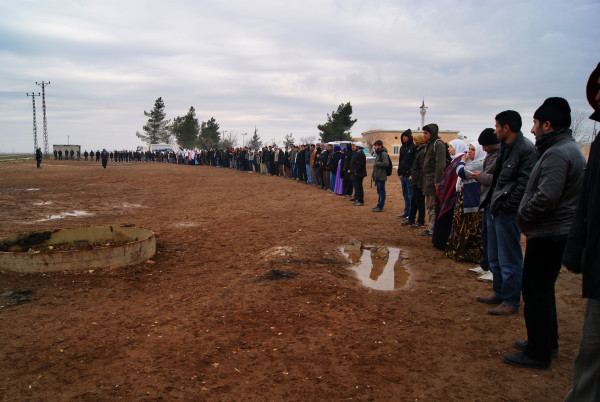
The crowd goes on to recite a string of other well-rehearsed slogans that I can neither understand nor follow. After they’ve run out of chants, they extend their well-wishes to the fighters and, at the very end, to Apo—their affectionate nickname for Ocalan.
I hear gunfire ricochet through the streets beyond the field. What can it be like over there? I’ve heard that around 7,000 civilians chose to stay in the city when the Islamic State began its assault.
I meet a woman just before leaving Mahser. She’s from Kobani and doesn’t speak Turkish, but somehow we’re able to communicate through basic words and gestures. The woman tells me she has three sons fighting in Kobani. Her eyes remain fixed on the hazy outline of the city, as if she hopes to catch sight of them.
While I watched the war from across the field, Italian journalist Francesca Borri was trying to escape it.
Several days earlier, Francesca had been smuggled over the Syrian border into Kobani. She had left after coming under mortar fire from the Islamic State. “The point is not getting in, as usual,” Francesca tells me when we meet up in Suruç. “The point is getting out.” She says she was refused reentry into Turkey by Turkish border guards, who told her, “No, no, you went to Kobani. You have Kurdish friends, stay with them!”
I ask her about the civilians inside the city she just left. So far, they’re doing alright, she says: the Kurdish fighters look after them, and they are staying in their own homes on one side of the city. Around half are children. “I mean, of course, it’s a war,” Francesca says. “Kobani isn’t Paris. But I would say that compared to other wars, it’s a good situation for civilians.”
Francesca describes three levels of fighting inside Kobani—Kalashnikov fire exchanged on the frontline, heavy artillery shells lobbed into the city by the Peshmerga (Kurdish Iraqi forces who have entered Syria to assist in the fight against the Islamic State), and aerial bombardment by the US-led coalition. “The battle is mortar fire and rocket fire from one extreme to the other of the city, so you just stay in the middle—and if you’re lucky, nothing is dropped on your head.”
Francesca is a seasoned war correspondent, having spent much of the last two and a half years reporting on Syria. To her, the war raging in Kobani is “a war within a war”—a war for the future Kurdistan wedged into the sprawling and endless conflict in Syria.
In Mahser, the sound of gunfire was constant. Back in Suruç, I feel safe and far from the fighting. Inside the cultural center, people sit in small groups and converse in a mélange of languages: Kurmanji, Turkish, Arabic, Italian, English. Many are Kurds from other parts of Turkey. Some are members of the diaspora who grew up in European countries such as Germany or Switzerland.
Then there is Darlene. Originally from Ireland, Darlene O’Carroll is currently studying in Copenhagen. She has come to Suruç for her Christmas holiday.
Darlene tells me she decided to make the trip after watching news footage of the devastation in Kobani. “When I should have been working, I was looking at all the images. There were a few that just kind of pulled at my heartstrings.”
On Darlene’s first day in the city, a Kurdish man from Iran showed her around. “This was my first shock,” she says. “He’s Mormon. His family were executed by the Iranian government. His uncle sent him to India to study IT, and when he came back, he worked for a cable company, and he had his own store….” Darlene pauses for a moment. “His plan is to finish up here … and then go to Kobani to fight. I asked him, ‘How long are you staying?’ And he just said, ‘Until I die.’ It was like … ‘Until I finish this cup of tea …’” Darlene shakes her head. “It probably won’t hit me fully until I go back to Denmark.”
Since she arrived, Darlene has been helping with wiring electricity in the camps. She also works with a Kurdish theater group from Istanbul that gives refugee children here a creative outlet to express themselves through improvisation and roleplaying.
Today, Darlene has been invited to join a daf workshop in a camp at the edge of the city. (A daf is a large frame drum, popular throughout the Middle East.) I tag along.
A group of children, mostly young teenage and preteen girls, fill one of the tents. The walls are decorated with pictures of Kurdish musicians, drawings of animals, and the word “Kobani” drawn neatly in pastel colors.
One of the youngest girls can say a few words of English. When we answer her questions, the other children’s eyes grow wide. They prod her to ask us more.
Initially camera shy, the children slowly get used to our presence. One of the two boys is a master daf player and models for my camera. Before long, some of the younger girls are posing too and taking pictures of each other.

Later, I will read that there are 1.7 million Syrian refugees and asylum-seekers in Turkey—half of them children.
Later that night, Iris and I are walking the dark and dusty streets of Suruç when we hear the murmurs of a thumping rhythm carried on the wind. Iris knows exactly what it is—”A wedding!”
We follow the beat, which soon becomes a cacophony of drums and whoops. We turn a corner and find a hundred people dancing in a winding circle across the street. Young boys dash between legs. A man fires a shotgun repeatedly into the air, while another holds fireworks in his bare hands and shoots them into the sky. A small circle within the larger circle of dancers carries a man aloft on a chair. It is the groom. His shirt is in disarray, his face smeared with paint. He wears an exhausted grin—Kurdish weddings last three days and nights.
We stand and watch the spectacle until we are noticed. A man who speaks English brings two chairs and sits down to chat with us. A woman serves us tea. Some of the young girls shyly sneak glances at the two foreigners.
I tell Darlene about our adventure later that night. She smiles. “They love seeing people from other countries here—I can really feel that. In the camps, they invite you in for dinner, and they say to you in the shops, ‘You know, if you don’t have a bed to sleep in tonight, you can stay here with us.’ There’s always somebody handing you food, there’s always someone handing you a cup of tea. At nighttime, if you’re cold, they’re always pulling blankets up over you. They really try and look after you.”
It’s our final night in Suruç. My husband and I lie in our tent in a small garden behind the cultural center. It’s the weekend, and dozens of new volunteers have arrived. Both of the center’s visitor rooms and the two heated tents behind us are full, and a group of young Kurdish men are sleeping in the main room.
The ground shakes every so often throughout the night, as the US-led coalition forces drop bombs on Islamic State targets in Kobani. The blasts are not so loud from here, and they would be indistinguishable from the growl of truck motors on the road outside were it not for the quaking earth.
A rumor, reportedly from one of the YPG fighters, says Kobani will be freed in the next two or three days. The prediction turns out to be wrong—about the date, that is. A few weeks later, a man I met in the distribution center sends me pictures of the liberation of Kobani. They show a Kurdish red, green, and yellow flag being raised over a hill overlooking the city, replacing the black Islamic State flag that previously flew there.
Today, the residents of Kobani are slowly beginning to return to their homes. Much of the city remains uninhabitable after months of fighting and destruction. The long rebuilding process is now underway.
Meanwhile, Kurdish forces continue to fight in neighboring areas. Many other communities across Syria and Iraq are still occupied by ISIS.
But Kobani is free. When I saw the photos of its liberation, I imagined the celebrations in the cultural center, and the wild all-night dancing around fires in Mahser. I wish I could have stayed to see it, and I wonder what the future will bring.
Jo Magpie Jo Magpie is a freelance journalist, travel writer, and long-term wanderer currently based in Granada, Spain. Blog: agirlandherthumb.wordpress.com
- Follow us on Twitter: @inthefray
- Comment on stories or like us on Facebook
- Subscribe to our free email newsletter
- Send us your writing, photography, or artwork
- Republish our Creative Commons-licensed content

